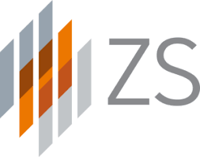Belay Technologies has been voted Baltimore Business Journal's (BBJ) Best Places to Work 2019, runner up in 2020 and a finalist in 2021!
Belay Technologies is seeking a Systems Engineer to join our intel team.
Candidates should have the following qualifications:
- TS/SCI Clearance with polygraph required for all levels
- Level 1
- Seven (7) or more years' experience as an SE in programs and contracts of similar scope, type, and complexity is required.
A technical bachelor’s degree in System Engineering, Computer Science, Information Systems, Engineering Science, Engineering Management, or a related discipline from an accredited college or university is required.
Five (5) years of additional SE experience may be substituted for a bachelor’s degree
- Seven (7) or more years' experience as an SE in programs and contracts of similar scope, type, and complexity is required.
- Level 2
- Fourteen (14) years’ experience as a SE in programs and contracts of similar scope, type and complexity is required.
Bachelor’s degree in System Engineering, Computer Science, Information Systems, Engineering Science, Engineering Management, or related discipline from an accredited college or university is required.
Five (5) years of additional SE experience may be substituted for a bachelor’s degree.
FTEs/PCT Information Assurance
- Fourteen (14) years’ experience as a SE in programs and contracts of similar scope, type and complexity is required.
- Level 3
- Required Qualifications:
Twenty (20) years’ experience as a SE in programs and contracts of similar scope, type and complexity is required.
Demonstrated experience in planning and leading Systems Engineering efforts is required.
Bachelor’s degree in System Engineering, Computer Science, Information Systems, Engineering Science, Engineering Management, or related discipline from an accredited college or university is required.
Five (5) years of additional SE experience may be substituted for a bachelor’s degree.
- Required Qualifications:
Candidates are required to have the following skills:
- Analyzes user's requirements, concept of operations documents, and high-level system architectures to develop system requirements specifications.
- Analyzes system requirements and leads design and development activities.
- Guides users in formulating requirements, advises alternative approaches, and conducts feasibility studies.
- Provides (technical leadership for the integration of requirements, design, and technology. Incorporates new plans, designs and systems into ongoing enations.
- Develops technical documentation.
- Develops system architecture and system design documentation.
- Guides system development and implementation planning through assessment or preparation of system engineering management plans and system integration and test plans. Interacts with the Government regarding systems Engineering technical consideration sand for associated problems, issues or conflicts.
- Ultimate responsibility for the technical, integrity of work performed, and deliverables associated with the Systems Engineering area of responsibility.
The Level 1 System Engineer (SE) shall possess the following capabilities:
- Manage system requirements and derived requirements to ensure the delivery of production ystems that are compatible with the defined system architecture(s) – Department of Defense Architecture Framework (DoDAF), Service-oriented Architecture (SOA), etc.
- Contribute to the development of sections of systems engineering documentation such as System Engineering Plans, Initial Capabilities Documents, Requirements specifications, and Interface Control Documents
- Assist with the development of system requirements, functional requirements, and allocation of the same to individual hardware, software, facility, and personnel components
- Coordinate the resolution of action items from Configuration Control Board (CCB) meetings, design reviews, program reviews, and test reviews that require cross-discipline coordination
- Participate in an Integrated Product Team to design new capabilities based upon evaluation of all necessary development and operational considerations
- Allocate real-time process budgets and error budgets to systems and subsystem components
- Generate alternative system concepts, physical architectures, and design solutions
- Define the methods, processes, and evaluation criteria by which the systems, subsystems and work products are verified against their requirements in a written plan
- Develop system design solution that satisfies the system requirements and fulfills the functional analysis
- Review and provide input to program and contract work breakdown structure (WBS), work packages and the integrated master plan (IMP)
- Participate in the development of system engineering documentation, such as System Engineering Plans, Initial Capabilities Documents, Requirements Specifications, and Interface Control Documents
- Participate in interface definition, design, and changes to the configuration between affected groups and individuals throughout the life cycle
- Derive from the system requirements an understanding of stakeholder needs, functions that may be logically inferred and implied as essential to system effectiveness
- Derive lower-level requirements from higher-level allocated requirements that describe in detail the functions that a system component must fulfill, and ensure these requirements are complete, correct, unique, unambiguous, realizable, and verifiable
- Participate in establishing and gaining approval of the definition of a system or component under development (requirements, designs, interfaces, test procedures, etc.) that provides a common reference point for hardware and software developers
- Develop derived requirements for Information Assurance Services (Confidentiality, Integrity, Non repudiation, and Availability)
- Basic Information Assurance Mechanisms (e.g., Identification, Authentication, Access Control, Accountability)
- Security Mechanism Technology (Passwords, cryptography, discretionary access control, mandatory access control, hashing, key management, etc.)
The Level 2 System Engineer (SE) shall possess the following capabilities:
- Manage system requirements and derived requirements to ensure the delivery of production systems that are compatible with the defined system architecture(s) – Department of Defense Architecture Framework (DoDAF), Service-oriented Architecture (SOA), etc.
- Contribute to the development of sections of systems engineering documentation such as System Engineering Plans, Initial Capabilities Documents, Requirements specifications, and Interface Control Documents
- Assist with the development of system requirements, functional requirements, and allocation of the same to individual hardware, software, facility, and personnel components
- Coordinate the resolution of action items from Configuration Control Board (CCB) meetings, design reviews, program reviews, and test reviews that require cross-discipline coordination
- Participate in an Integrated Product Team to design new capabilities based upon evaluation of all necessary development and operational considerations
- Allocate real-time process budgets and error budgets to systems and subsystem components Generate alternative system concepts, physical architectures, and design solutions
- Define the methods, processes, and evaluation criteria by which the systems, subsystems and work products are verified against their requirements in a written plan
- Develop system design solution that satisfies the system requirements and fulfills the functional analysis
- Review and provide input to program and contract work breakdown structure (WBS), work packages and the integrated master plan (IMP)
- Participate in the development of system engineering documentation, such as System Engineering Plans, Initial Capabilities Documents, Requirements Specifications, and Interface Control Documents
- Participate in interface definition, design, and changes to the configuration between affected groups and individuals throughout the life cycle
- Derive from the system requirements an understanding of stakeholder needs, functions that may be logically inferred and implied as essential to system effectiveness
- Derive lower-level requirements from higher-level allocated requirements that describe in detail the functions that a system component must fulfill, and ensure these requirements are complete, correct, unique, unambiguous, realizable, and verifiable
- Participate in establishing and gaining approval of the definition of a system or component under development (requirements, designs, interfaces, test procedures, etc.) that provides a common reference point for hardware and software developers
- Develop derived requirements for Information Assurance Services (Confidentiality, Integrity, Non repudiation, and Availability); Basic Information Assurance Mechanisms (e.g., Identification, Authentication, Access Control, Accountability); and Security Mechanism Technology (Passwords, cryptography, discretionary access control, mandatory access control, hashing, key management, etc.)
- Implement comprehensive SOA solutions
- Implement operational view, technical standards view, and system and services view for architectures using applicable DoDAF standards
- Review and/or approve system engineering documentation to ensure that processes and specifications meet system needs and are accurate, comprehensive, and complete
- Capture all interface designs in a common interface control format, and store interface data in a commonly accessible repository
- Assess each risk to the program and determine the probability of occurrence and quantified consequence of failure in accordance with an approved risk management plan
- In conjunction with system stakeholders, plan the verification efforts of new and unproven designs early in the development life cycle to ensure compliance with established requirements
- Prepare time-line analysis diagrams illustrating the flow of time-dependent functions
- Establish a process to formally and proactively control and manage changes to requirements, consider impacts prior to commitment to change, gain stakeholder buy-in, eliminate ambiguity, ensure traceability to source requirements, and track and settle open actions
- Manage and ensure the technical integrity of the system baseline over time, continually updating it as various changes are imposed on the system during the lifecycle from development through deployment and operations & maintenance
- Support the planning and test analysis of the DoD Certification/Accreditation Process (as well as other Government Certification and Accreditation (C&A) processes)
- Support the development and review of Joint Capability Integration Development System (JCIDS) documents (i.e., Initial Capability Document, Capabilities Description Document, IA Strategy)
- Provide technical direction for the development, engineering, interfacing, integration, and testing of specific components of complex hardware/software systems to include requirements elicitation, analysis and functional allocation, conducting systems requirements reviews, developing concepts of operation and interface standards, developing system architectures, and performing technical/non-technical assessment and management as well as end-to-end flow analysis
- Develop scenarios (threads) and an Operational Concept that describes the interactions between the system, the user, and the environment, that satisfies operational, support, maintenance, and disposal needs
- Conduct quantitative analysis in non-functional system performance areas like Reliability, Maintainability, Vulnerability, Survivability, Produce ability, etc.)
- Establish and follow a formal procedure for coordinating system integration activities among multiple teams, ensuring complete coverage of all interfaces
Experience in at least two (2) of the following areas:
- DoD Architecture Framework (DoDAF) modeling and DoDAF system engineering analysis or development
- Cryptographic development and analysis
- IA and cybersecurity architectures, concepts, principles, use cases, and standards
- DoD, IC, and other federal government (e.g., NIST) policy, directives, and instructions relevant to IA and cybersecurity strategic planning and direction
Experience in at least three (3) of the following areas:
- Red Hat and Windows Certificate Authority
- JunOS (+SRX) Ipsec VPN Gateway
- Hypori Transport Layer Security (TLS) software application;
- NetApp storage/filing application
- VMware Cloud Computing enhanced tools
- Secure cellular and fixed network software applications
- VMware and Networking tool
Experience in at least three (3) of the following Cybersecurity (CS) areas:
- CS Architecture, design, research and implement tools, such as GOTS, COTS, emerging technology including cloud and automation
- Identify and coordinate execution of pilot programs or projects and/or experiments within DoD or the IC
- CS capability deployment experience
- Evaluate and analyze benefits and gaps through industry and government agency tools
- CS design concepts, criteria and engineering efforts
- Product research, development, integration and testing
- CS risk management and mitigation strategies
- Supply Chain Risk Management.
- Experience in Cyber Security (CS) Assessments through operating, analyzing, and testing various platforms and/or tools to evaluate performance
- Experience in CS Standards through reviewing/editing/developing CS Standards within international standards organizations (e.g., IETF, TCG, OASIS).
The Level 3 System Engineer (SE) shall possess the following capabilities:
- Manage system requirements and derived requirements to ensure the delivery of production systems that are compatible with the defined system architecture(s) – Department of Defense Architecture Framework (DoDAF), Service-oriented Architecture (SOA), etc.
- Contribute to the development of sections of systems engineering documentation such as System Engineering Plans, Initial Capabilities Documents, Requirements specifications, and Interface Control Documents
- Assist with the development of system requirements, functional requirements, and allocation of the same to individual hardware, software, facility, and personnel components
- Coordinate the resolution of action items from Configuration Control Board (CCB) meetings, design reviews, program reviews, and test reviews that require cross-discipline coordination
- Participate in an Integrated Product Team to design new capabilities based upon evaluation of all necessary development and operational considerations
- Allocate real-time process budgets and error budgets to systems and subsystem components Generate alternative system concepts, physical architectures, and design solutions
- Define the methods, processes, and evaluation criteria by which the systems, subsystems and work products are verified against their requirements in a written plan
- Develop system design solution that satisfies the system requirements and fulfills the functional analysis
- Review and provide input to program and contract work breakdown structure (WBS), work packages and the integrated master plan (IMP)
- Participate in the development of system engineering documentation, such as System Engineering Plans, Initial Capabilities Documents, Requirements Specifications, and Interface Control Documents
- Participate in interface definition, design, and changes to the configuration between affected groups and individuals throughout the life cycle
- Derive from the system requirements an understanding of stakeholder needs, functions that may be logically inferred and implied as essential to system effectiveness
- Derive lower-level requirements from higher-level allocated requirements that describe in detail the functions that a system component must fulfill, and ensure these requirements are complete, correct, unique, unambiguous, realizable, and verifiable
- Participate in establishing and gaining approval of the definition of a system or component under development (requirements, designs, interfaces, test procedures, etc.) that provides a common reference point for hardware and software developers
- Develop derived requirements for Information Assurance Services (Confidentiality, Integrity, Non repudiation, and Availability); Basic Information Assurance Mechanisms (e.g., Identification, Authentication, Access Control, Accountability); and Security Mechanism Technology (Passwords, cryptography, discretionary access control, mandatory access control, hashing, key management, etc.)
- Implement comprehensive SOA solutions
- Implement operational view, technical standards view, and system and services view for architectures using applicable DoDAF standards
- Review and/or approve system engineering documentation to ensure that processes and specifications meet system needs and are accurate, comprehensive, and complete
- Capture all interface designs in a common interface control format, and store interface data in a commonly accessible repository
- Assess each risk to the program and determine the probability of occurrence and quantified consequence of failure in accordance with an approved risk management plan
- In conjunction with system stakeholders, plan the verification efforts of new and unproven designs early in the development life cycle to ensure compliance with established requirements
- Prepare time-line analysis diagrams illustrating the flow of time-dependent functions
- Establish a process to formally and proactively control and manage changes to requirements, consider impacts prior to commitment to change, gain stakeholder buy-in, eliminate ambiguity, ensure traceability to source requirements, and track and settle open actions
- Manage and ensure the technical integrity of the system baseline over time, continually updating it as various changes are imposed on the system during the lifecycle from development through deployment and operations & maintenance
- Support the planning and test analysis of the DoD Certification/Accreditation Process (as well as other Government Certification and Accreditation (C&A) processes)
- Support the development and review of Joint Capability Integration Development System (JCIDS) documents (i.e., Initial Capability Document, Capabilities Description Document, IA Strategy)
- Provide technical direction for the development, engineering, interfacing, integration, and testing of specific components of complex hardware/software systems to include requirements elicitation, analysis and functional allocation, conducting systems requirements reviews, developing concepts of operation and interface standards, developing system architectures, and performing technical/non-technical assessment and management as well as end-to-end flow analysis
- Develop scenarios (threads) and an Operational Concept that describes the interactions between the system, the user, and the environment, that satisfies operational, support, maintenance, and disposal needs
- Conduct quantitative analysis in non-functional system performance areas like Reliability, Maintainability, Vulnerability, Survivability, Produceability, etc.)
- Establish and follow a formal procedure for coordinating system integration activities among multiple teams, ensuring complete coverage of all interfaces
- Develop comprehensive SOA solutions
- Develop operational view, technical standards view, and system and services view for architectures using applicable DoDAF standards
- Conduct and/or approve end-to-end system trade analyses to optimize system operations over its life-cycle through the proper balance of non-functional system performance areas
- Use validated models, simulations, and prototyping to mitigate risk and reduce cost of system development
- Ensure effective, periodic review and control of the evolving configuration of a system, both hardware and software components and associated documentation, during the life of the system
- Serve as a member of the CCB
- Develop system design alternatives that consider life cycle cost, reuse, complexity, risk, system expansion, and growth
- Develop alternative courses of action, workarounds, and fallback positions with a recommended course of action for each risk, and monitor and re-evaluate risks at appropriate milestones.
- Monitors risks using earned value management (EVM) data
- Maintain knowledge of current and evolving agency, national, and international standards applicable to the system development of interest.
- Apply and enforce use of suitable standards to ensure consistency and interoperability of developer hardware and software
- As a participant within an Analysis of Alternatives (AoA) effort, recommend a preferred solution based on selection criteria adjusted for reasonableness and validity of assumptions, technology limitations, environmental impact, and life-cycle costs
- Provide technical direction for the development, engineering, interfacing, integration, and testing of all components of complex hardware/software systems to include requirements elicitation, analysis and functional allocation, conducting systems requirements reviews, developing concepts of operation and interface standards, developing system architectures, and performing technical/non-technical assessment and management as well as end-to-end flow analysis
- Improve standard integration strategies based upon rationale for previous decisions that resulted in improved integration performance
- Fully define interfaces in terms of origination, destination, stimulus, and data characteristics for software; and electrical and mechanical characteristics for hardware
- Cybersecurity Experience in CS Assessments through 5 operating, analyzing, and testing various platforms and/or tools to evaluate performance.
Information Assurance Experience in at least two (2) of the following areas:
- DoD Architecture Framework (DoDAF) modeling and DoDAF system engineering analysis or development
- Cryptographic development and analysis
- IA and CS architectures, concepts, principles, use cases, and standards
- DoD, IC, and other federal government (e.g., NIST) policy, directives, and instructions relevant to IA and CS strategic planning and direction.
Cybersecurity Experience in at least three (3) of the following CS areas:
- CS Architecture, design, research and implement tools, such as GOTS, COTS, emerging technology including cloud and automation
- Identify and coordinate execution of pilot programs or projects and/or experiments within DoD or the IC
- CS capability deployment experience
- Evaluate and analyze benefits and gaps of industry and government agency tools
- CS design concepts, criteria and engineering efforts
- Product research, development and integration and testing
- CS risk management and mitigation strategies
- Supply Chain Risk Management
- 8 weeks paid leave - 4 weeks of personal leave, 3 Yay! days, take off on your birthday,11 paid holidays and optional leave up to 6 days through Belay's volunteer program
- 10% matching in 401(k) contributions vested on day one
- $5,000 annual training/tuition
- Student Loan Repayment Program
- 100% company-funded HSA
- Rich medical coverage (100% coinsurance)
- Dental coverage including orthodontia
- Up to $420,000 in life insurance, premiums 100% company funded
- Amazon Prime, gym reimbursement, monthly lunches, games and prizes
- Pet adoption program, generous referral bonus program, fun events, and more!
At Belay, we are committed to creating an environment where you can thrive both professionally and personally. We believe in transparency and fairness in compensation. Several factors influence final salary including, but not limited to, geographic location, Federal Government contract labor categories and contract wage rates, relevant prior work experience, education, specific skills and competencies and certifications. Belay offers a competitive total compensation package that includes benefits and perks, a flexible work-life balance, and career development.
Salary Range: $150,000 to $240,000
Belay Technologies is a certified Service-Disabled Veteran-Owned Small Business located in Columbia, Maryland (Baltimore/Washington area). Belay Technologies specializes in systems automation and full stack development. Belay Technologies provides leading technology and engineering solutions to the DoD, as well as state-of-the-art commercial products. We hire software engineers, web designers, test engineers, systems engineers, systems administrators, database engineers and other tech services. We are an Equal Opportunity Employer. Employment decisions are made without regard to race, color, religion, national origin, gender, sexual orientation, gender identity, age, physical or mental disability, genetic factors, military/veteran status or other characteristics protected by law.
Top Skills

What We Do
Belay Technologies, Inc. is a certified Service Disabled Veteran Owned Small Business (SDVOSB) located in the Baltimore-Washington area providing technology and engineering services to the Department of Defense (DoD) and expanding into the commercial market. Belay Technologies specializes in technical IT services including; software development, virtualization, systems administration, networking, and testing.
Belay continues to expand, and we are always seeking top talent. Belay is more than just a company.....It's a culture. With our work hard, play hard edge and a family-like feel, our employees feel at home with Belay. We are a laid back, fun, innovative team that gets together monthly for lunches, enjoys company parties, bbq's and fun adventures together, and joins in volunteer and charity events as a socially aware company.










